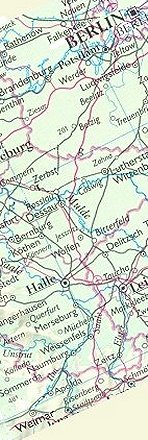
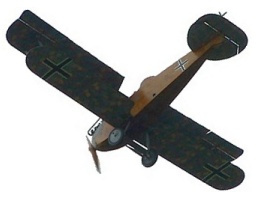
The first regular passenger airline service in the world began in 1919, in Germany, just a couple of months after the War to End Wars finally shuddered to a halt from sheer exhaustion.
It came about like this ...
On 9 November 1918, two days before the Armistice was signed, a senior politician named Muller had lunch at his Berlin club. His politics were of the centre-right, and following the recent government changes, he was no longer a minister. After lunch he strolled quietly back to the Reichstag building where he worked. His memoirs relate what he saw that afternoon.
Berlin at the time was an uneasy place. Violence and revolution were in the air and on the streets. The Army's rigid control seemed to be slipping. A week earlier, sailors of the German Navy had refused to take out the fleet for a final (and completely pointless) set-piece battle with the Royal Navy. They deserted in large numbers. Soldiers too were throwing their rifles in the river and setting off home.
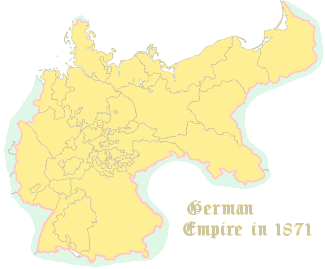
Workers' councils had sprung up in the cities, demanding peace and reform, and there was a real sense that the rigid authoritarian regime was on the point of being replaced by a system more tolerant of ordinary citizens. The government was now in the hands of the Social Democratic Party, led by Ebert and Scheidemann, who must have felt that their hour had come at last. Their brand of socialism, however, was far less extreme than that of the Russian Bolshevists. Ebert in particular hated and feared revolution.
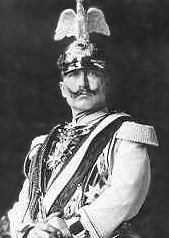
The Kaiser seemed not to care that the war was effectively over, nor that his country was demanding urgent change. He stayed with the Military High Command in Belgium.
He refused to abdicate, despite the desperate appeals of his increasingly isolated Chancellor.
Bismarck would perhaps have stood up to him, but Bismarck was long dead. The Iron Chancellor had spent his life pulling together almost single-handedly a motley assortment of little states run by princelings and other minor royalty into the mighty German Empire that was proclaimed in 1871. But the old man's caution had finally proved too much for the young Kaiser's impatience, and Bismarck was removed. In 1894, just before he died, Bismarck had said gloomily "Twenty years from now it will all be over".
By 1918 it certainly seemed as though the country had had enough of the War, and of the Kaiser, and the prediction appeared to have come true.
The current Chancellor in Berlin was aware that the situation was getting rapidly out of hand. A general strike was imminent, and the Kaiser no longer listened to advice. So that morning the Chancellor took matters into his own hands. He announced to the world that the Kaiser had, in fact, abdicated. Then he resigned, and formally handed over his office to Ebert, the leader of the majority party and a respected conservative politician.
Muller joined Scheidemann on a Reichstag balcony after lunch. Scheidemann was a life-long Social Democrat and currently a minister, together with his colleague Ebert. When Scheidemann learned what the Chancellor had done, he jumped onto a chair and yelled to the small crowd, "Long live the German Republic!" They cheered politely. He jumped down again, landing on Muller's toe. (Scheidemann too wrote his memoirs. In his version, he had addressed a huge cheering crowd outside the Reichstag from the balcony's balustrade!)
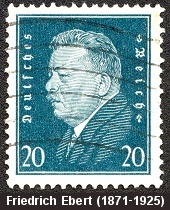 Ebert was not pleased to have become Chancellor in the middle of a revolution. He had great respect for monarchy, democracy, and the rule of law. He would have preferred things to continue much as they were, but with the Kaiser in a less dominant role.
Ebert was not pleased to have become Chancellor in the middle of a revolution. He had great respect for monarchy, democracy, and the rule of law. He would have preferred things to continue much as they were, but with the Kaiser in a less dominant role.
Chancellor Ebert wished to form a coalition governmen with the large Catholic Centre party, but all the wild talk of revolution and workers' rights forced him towards an accommodation with the left-wing parties. The government struggled along for the next two months, with regular advice from the Army high command and armed troops on the streets to keep order. A possible communist-led uprising was brutally suppressed when the firebrand communist revolutionary Rosa Luxemburg was hunted down and killed. The new goverment began enthusiastically issuing decrees extending workers' rights.
An election was held in January 1919. When the votes were counted, the Social Democratic Party had won more votes than any other, but the number was well short of the majority they needed to form a government. The Catholic Centre party had come second. The left-wing workers' parties were a poor third. Ebert's only sensible option was a coalition of the right and centre. Scheidemann took over as Chancellor, and Ebert became the new republic's first President.
But volatile Berlin was not a safe place for a government instinctively opposed to any major reforms. Instead, they chose to meet at Weimar, a quiet country town near Leipzig, 150 miles to the south. The town's theatre served as the parliamentary building.
However, being so isolated from the capital meant that communications were difficult. With strikes on the railways and coal in short supply, it took four or five days even for an express letter from Berlin to reach Weimar. The Berlin newspapers were out of date by the time the politicians in Weimar could read them. The government had no real idea what the people were doing.
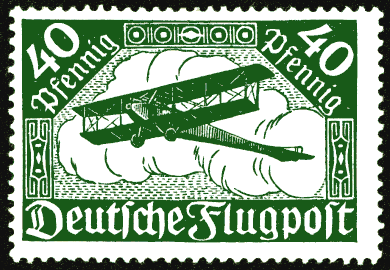
DLR is mentioned in Google books. I'd include a link, but it seems to be too complicated for the website checking tools to handle.
The solution to the problem was air transport. There were plenty of serviceable aircraft around, though most of them had been designed to carry just one passenger. A company named DLR (Deutsche Luft Reederei) was given the contract to fly a daily schedule between Berlin and Weimar. Its first cargo, in February 1919, was 4,000 copies of the Berlin morning newspaper.
The new government was so proud of their new airline that a special stamp was issued to stick on the letters it carried, but I don't believe the artist can ever have seen the aircraft he drew. It doesn't look much like the machines that were used, or, for that matter, like any aircraft that would actually fly! Stubby little reconnaissance biplanes such as the AEG J.I and the LVG C.VI (illustrated at the top of the page) probably did most of the work.
Air travellers in 1919 didn't get a hot meal and a choice of in-flight entertainment. What they got was wind and rain and engine oil hitting them in the face at a hundred miles an hour. It was very cold, and often dangerous. Still, there were a few intrepid souls who made the trip, usually officials putting duty before comfort. But DLR's aircraft regularly carried the mail, whatever the weather.
Some material quoted above is taken from articles published by Harold Kurz in 1968.
